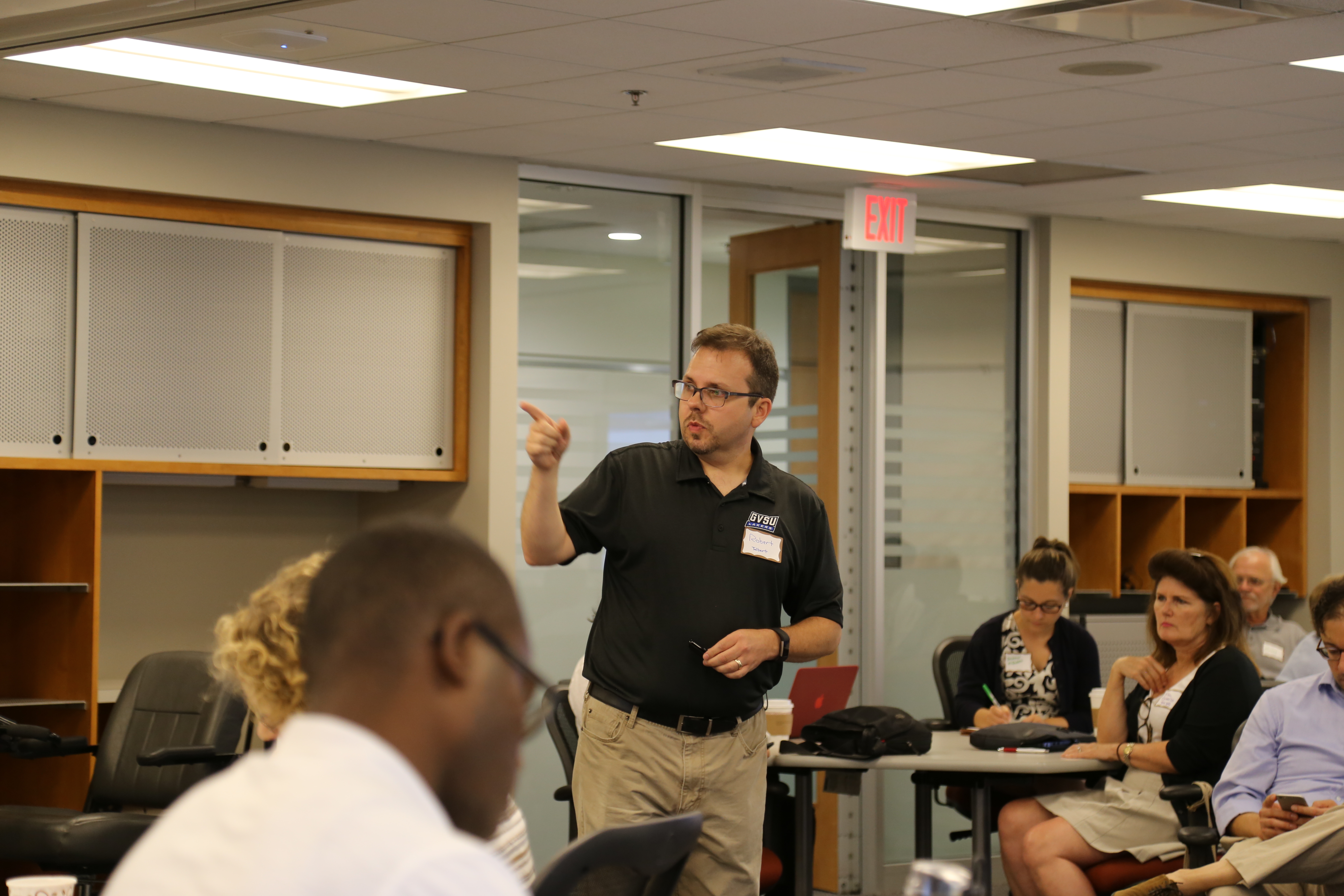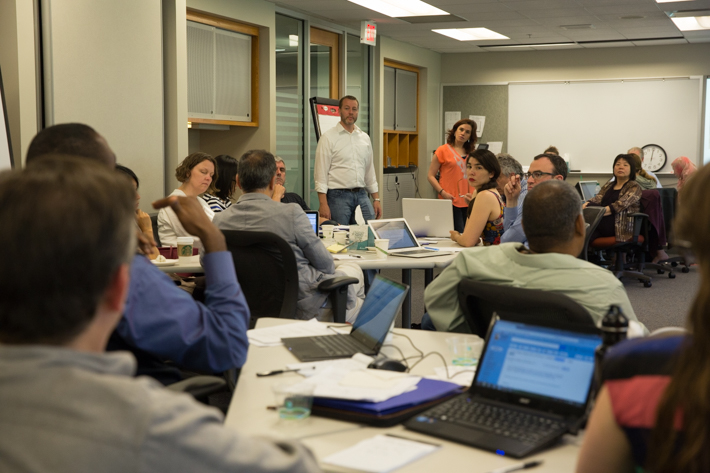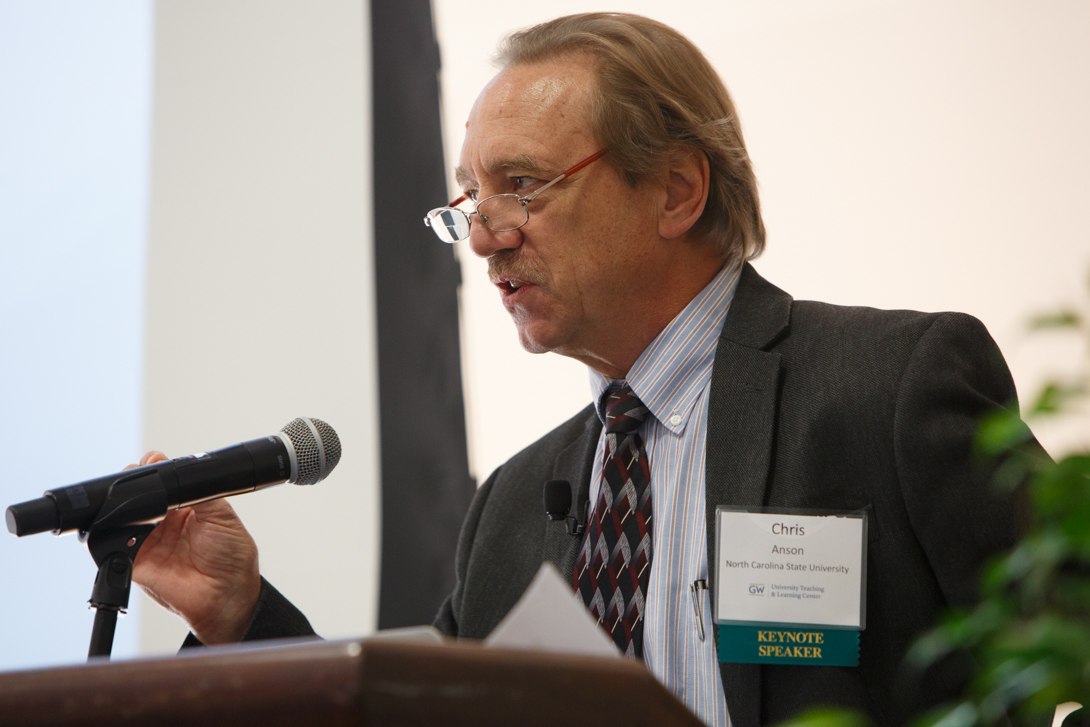By Ruth Steinhardt
The George Washington University Teaching and Learning Center (UTLC) hosted a workshop on flipped learning Wednesday, giving professors a look at one way to revitalize their pedagogy before classes begin on Monday.
About 65 professors from across the university gathered in Gelman Library for “Flipped Learning in the Quantitative Classroom,” a morning-long discussion and hands-on seminar.
“Flipping” is a response to a basic structural problem of traditional teaching models, in which students generally do the easiest work—learning vocabulary, new ideas and basic principles—in class, where they have the most access to help from peers and teachers.
The more difficult work—applying those concepts practically—happens in individual papers, projects and homework outside of class, where access to help is much more limited. And while professors may still be available outside of class via office hours or other modes of contact, only traditionally “good” students tend to seek out those resources, workshop leader Robert Talbert said.
“We set students up for failure in some ways,” said Dr. Talbert, a math professor at Grand Valley State University. “They’re encountering the most difficult material at the moment when they’re most alone…and on the flip side we’re giving them the simplest stuff when we’re most accessible.”
In a “flipped” model, by contrast, students’ initial contact with material takes place before class, freeing up classroom time for active learning. (The “classroom” may also be virtual, as in an online course.) Students might watch a videotaped lecture, read a guide to the material and complete worksheets before any teacher introduces them. Preliminary studies suggest impressive results, like increased student engagement and improved pass rates, in classes that flip their curriculum.
“In some ways, [flipping] is really innovative, but in other ways it’s very classical,” Dr. Talbert said.
Though the workshop was nominally on teaching quantitative classes, attendees came from across the university.
Ian Stone, a first-year doctoral student at the Graduate School of Education and Human Development who specializes in the teaching of languages, said issues of active learning and the best uses of class time are “universal” across disciplines.
LaKeisha McClary, a professor of chemistry in the Columbian College of Arts and Sciences, said flipped learning is one way to reach out to students who may struggle with a traditional teaching model.
“In this room, we all have Ph.Ds.,” she said. “What about students who aren’t like us? In some ways it’s about equity and access in the classroom.”
Dr. Talbert conceded that some students object to being asked to take on much of the individual burden of learning basic concepts. But their teachers, he said, can and should “lean in” to that objection.
“If you graduate [college] and cannot or don’t want to teach yourself new material, you’ve wasted your money,” he said, adding that he sometimes tells students, “I can’t teach you mathematics, I can only teach you how to learn mathematics.”
But do students actually complete the self-directed work, professors at the workshop asked?
According to Dr. Talbert, they almost always do. He said he could not remember holding a class to which more than two or three students arrived unprepared—and those who did would simply be excluded from class activities and spend that time watching the preparatory lecture on their phones, he said.
In general, the flipped model is a win-win for students and teachers, Dr. Talbert said. “Students will prepare if they’re given an activity that makes it worth their while,” he said. “And we should only give assignments that we want to grade.”
Dr. Talbert hopes that flipping classrooms will drag higher education back from a narrow focus on scores and grades, which he calls “inside baseball” and make it an environment in which transformative learning is possible.
“I firmly believe that higher education has the power to transform everything and everybody it touches for good—but I feel that higher education today isn’t living up to its potential,” he said. “So making simple changes will do a lot of work to get higher education back to its roots.”




